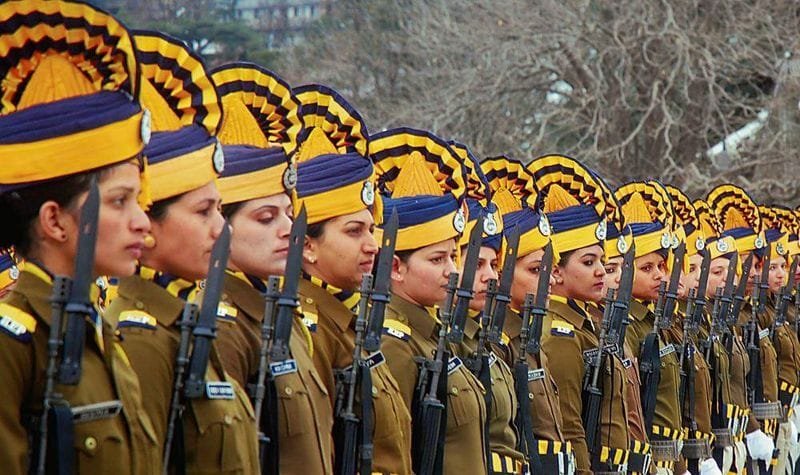New Delhi, April 15 — Despite a growing push for gender diversity in law enforcement, India’s police force has fewer than 1,000 women in senior roles such as Directors-General and Superintendents, with nearly 90 per cent of all women in policing serving in constabulary ranks, the India Justice Report (IJR) 2025 has revealed.
The report, an initiative of Tata Trusts supported by civil society organisations and data partners, assessed the performance of states across Police, Judiciary, Prisons and Legal Aid, using data from the NCRB, Ministry of Law and Justice, NJDG and other official sources.
Among the key findings, Karnataka retained its top position in justice delivery among 18 large and mid-sized states, followed by Andhra Pradesh, Telangana, Kerala and Tamil Nadu — with the southern states leading on diversity, infrastructure and staffing.
However, gender disparity remains pronounced. Of the 2.4 lakh women in the police force, only 960 are in IPS ranks. A further 24,322 serve in non-IPS officer positions like Deputy Superintendent or Sub-Inspector, while an overwhelming 2.17 lakh serve in the constabulary. Madhya Pradesh leads in the number of women DySPs, with 133.
“No state or Union Territory has achieved its own target for women’s representation in policing,” the report noted.
The judiciary shows modest gains in gender inclusion — women now comprise 38 per cent of the district judiciary. Yet, the representation of Scheduled Castes and Scheduled Tribes lags behind, at 14 per cent and 5 per cent respectively. Within the police force, SC and ST representation also falls short of population proportions, at 17 and 12 per cent.
Staffing shortages plague the justice system more broadly. India has only 15 judges per million people, far below the Law Commission’s 1987 recommendation of 50. High Courts are functioning with 33 per cent vacancies and district courts with 21 per cent. In courts such as Allahabad and Madhya Pradesh, the backlog forces judges to handle over 15,000 cases each. District judges are managing an average load of 2,200 cases.
In prisons, the average national occupancy stands at 131 per cent. In Uttar Pradesh, one in three jails is operating at over 250 per cent capacity. The availability of medical personnel is also critically low. Across many large states, the prisoner-doctor ratio exceeds 1,000:1 — far beyond the recommended 300:1.
The situation is no better in legal aid. The number of paralegal volunteers — crucial to bridging access gaps — has dropped by 38 per cent over five years, with only three PLVs per one lakh people today. Meanwhile, per capita spending on legal aid has nearly doubled since 2019, reaching Rs 6.46.
The IJR also noted that 78 per cent of police stations now have Women Help Desks, while 86 per cent of prisons are equipped with video conferencing systems.
Among smaller states, Sikkim retained its top spot, followed by Himachal Pradesh and Arunachal Pradesh. Bihar, Chhattisgarh and Odisha recorded the most improvement among the large and mid-sized states between 2022 and 2025. Uttar Pradesh and Uttarakhand also made gains, overtaking Gujarat and Haryana on the improvement index.
The report also evaluated the functioning of 25 State Human Rights Commissions and included essays on mediation and justice access for people with disabilities. It projected India’s prison population to reach 6.8 lakh by 2030 and warned that the system would remain “overburdened and inequitable” without urgent reform.
“Unless systemic changes are addressed, the burden will continue to fall disproportionately on the vulnerable and marginalised,” the IJR stated.

